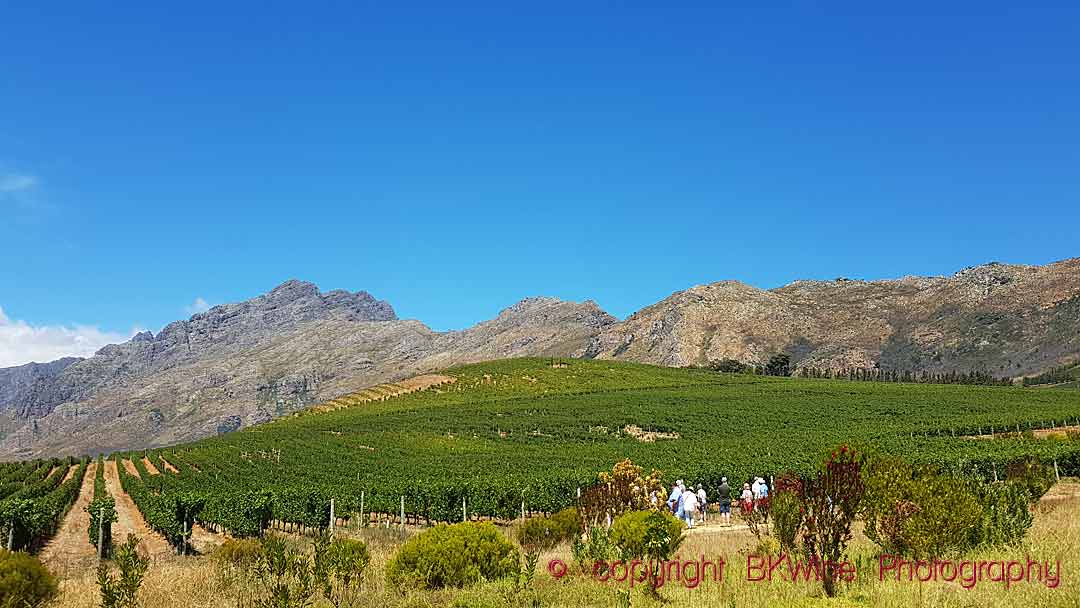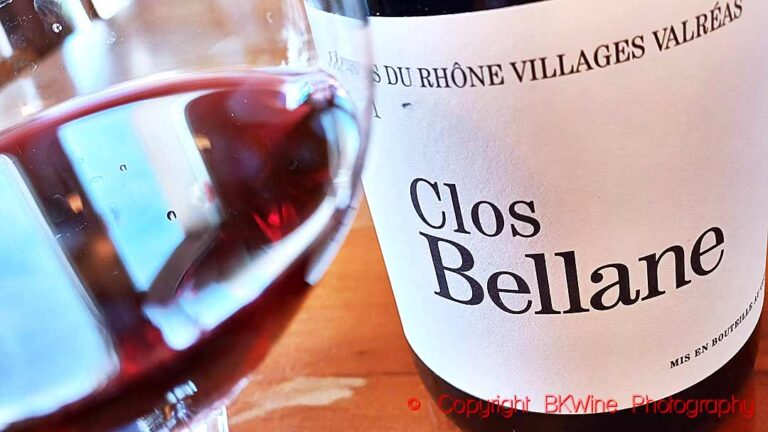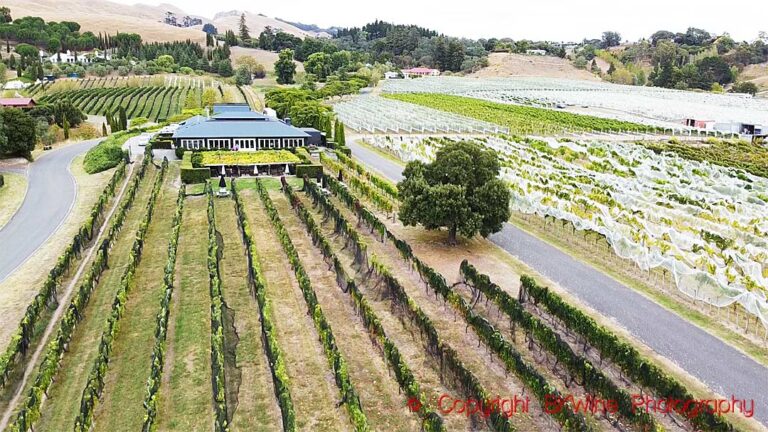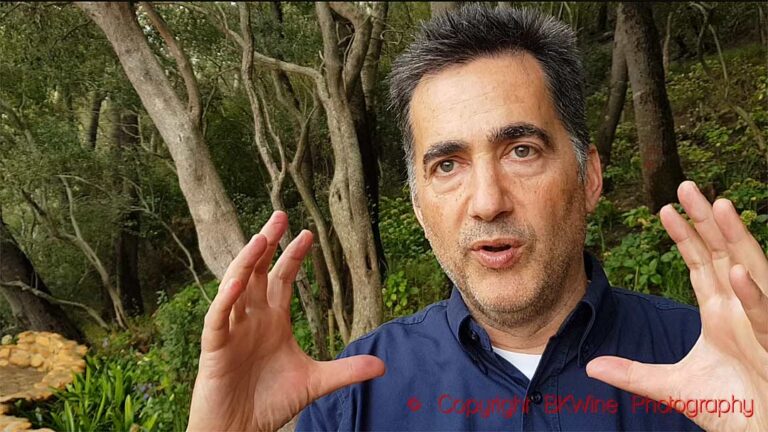Sometimes the best vineyards are hidden away on the smallest roads. That’s certainly the case for Oldenburg Vineyards. I can’t claim to be competent to pronounce it THE best, but it is certainly up there among the top. It is hidden away in a really difficult-to-find place. “Top” is also something you can say about their vineyards, some of the highest in Stellenbosch. They make a wide range of wines – a sign of an winemaker keen on experimenting – all worth exploring. Come with us on this trip to Oldenburg Vineyards in the Banghoek Valley in Stellenbosch.
When you leave Stellenbosch to go to Franschhoek, you go up over the Simonsberg mountains and then down through the Pniel village. But before you arrive at Pniel, you should make a turn to the right. If you pass the Banhoek Chilli Oil Company – an interesting restaurant for the chili-lover – you’ve missed the turning.
An article in our series of talks with South African winemakers. Read all here:
- Springfontein Wines, surprising and extraordinary South African
- Hidden high up in the Stellenbosch mountains is a gem, Oldenburg Vineyards
- Kaapzicht, a pinotage pioneer and cabernet champion in Stellenbosch
- Both classic and unusual, Stark-Condé Wines in Stellenbosch, South Africa
- Aslina Wines, Ntsiki Biyela’s new venture, and the future of South African wine
- DP Burger at Glenwood Vineyards in Franschhoek, South Africa
And also:
This is a longer version of an article published on Forbes.com.
The scary corner
Just over the ridge you should turn right into the Banhoek Valley, also called the Banghoek Valley. Banghoek means “scary corner”, the name given to this little valley by the people who first braved the mountains. Certainly some scary mountains. Once upon a time there were even elephants, buffalo, lions and leopards. Today, it is rumoured that there are still leopards, but the chance to see one is very slim. Fortunately.
This is where you find Oldenburg Vineyards, one of the most beautifully located wineries in Stellenbosch, and even in all of South Africa. A while back, in early 2023,I had the occasion to sit down with the winemaker, Nic van Aarde, and talk about his vineyards and his wines. It seems Nic is a person who likes to explore and to experiment. One can tell from the wide range of wines he makes. They are famous for their cabernet franc, with good reason, but also for their bordeaux blend, chardonnay and cabernet. But Nic also makes some chenin blanc, syrah, merlot, grenache,… and probably some more. And yet, they only make some 100,000 bottles.
A wide range of wines
So what to taste if you want to get to know Oldenburg Vineyards wines? I asked Nic to pick three wines that are the best illustration of the soul of Oldenburg: “Chardonnay is a big focus in the Banghoek Valley. We have a lot of very, very good producers of Chardonnay in the area. So the Oldenburg Vineyards chardonnay will definitely be a must. Secondly, we have a wine from our Rondekop range, which is our reserve range, called Rhodium. It’s actually a Right-Bank Bordeaux blend, so it’s cabernet franc-dominant with merlot and cabernet sauvignon, aged in French oak for 18 months. It’s a beautiful reflection of what cabernet franc can do in South Africa. And then I think, you know, cabernet does very well in Stellenbosch; Stellenbosch is the best cabernet producer in South Africa. So definitely the Oldenburg Vineyards cabernet, or what we call our Per Se Cabernet, which is our reserve Cabernet from the Rondekop range. A great wine for aging, a big, full-bodied wine but with the elegance and the coolness of the valley. So those would be my three.”
Their premium range is called Rondekop after the mountaintop that towers above the winery. It’s the highest elevation in Stellenbosch in an amphitheatre of three mountain ranges. Cool air comes into the valley giving this place a very particular micro-climate, a continental climate.
Sitting in the winery tasting room, I could glance out the window and look at the impressive mountains. Even Nic seems awed, “We’re situated in this little cul de sac, an amphitheatre. We are surrounded by mountains that go up to about 1600 meters above sea level. And you know, I’ve had people that have tasted wine all over the world; they’ve been to the Mosel Valley, they’ve been to New Zealand, and they come to Oldenburg, and they say it’s the most beautiful tasting venue they’ve ever seen. It feels like you are sitting between the clouds.”
Replanting the vines
Nic is a relatively recent arrival at Oldenburg. The winery was created in the mid-noughties; the first wines were made in 2007, and Nic has been here for only four years (in 2023 when we talked). The farm belongs to Adrian Vanderspuy, a South African living in Switzerland, who inherited the land from his grandmother. That’s when Oldenburg Vineyards, in its current shape, came to life.
When Nic arrived, it had already established itself as a winery making very ambitious quality wines. So I asked Nic why he came here and how it was, arriving new at a winery with an already established reputation.
“What attracted me to Oldenburg was just the focus on quality. I remember when I put my first Cabernet blend together, and I said to Adrian, ‘Should I make a blend of 10,000 bottles or 1000 bottles?’ Because I had enough wine to make 10,000 bottles. And Adrian said to me, ‘I don’t mind if you make 500 bottles, just make the best possible wine.’ So there’s a big focus on quality at Oldenburg.”
But where do you begin when you arrive? Nic continues, “The first thing we did was get stuck into the vineyard. We have some beautiful old vines here. But we also had to do some replanting. We’ve replanted the property to quite an extent, putting quite a lot of chardonnay and cabernet franc, some chenin blanc, some merlot, a little bit of syrah. We’ve also changed the trellising systems quite a bit.
But it was not only work in the vineyards. With all that different grape material, what do you do? The focus is to keep everything separate to be able to make the best wine for each batch of grapes. “So keeping everything in small batches, I ferment anything from a 500-kilogram bin to a 10-ton tank. So, just really keeping everything separate. And then focusing on the blending. So I would say the biggest focus has been in our vineyards, getting our vineyards up to top quality.”
The leaf-roll virus problem
Historically, there have been a lot of plantings in South Africa with grape material that has been subject to vine diseases – specifically a disease called leafroll virus. This is an issue that many other countries also have to deal with. So, replanting with top-quality vines can be critical. With the new plantings at Oldenburg, this is now mainly a problem of the past.
Nic is confident that this is now in control at Oldenburg: “We’ve taken a firm stance to really remove all these infected vines and plant new virus-free material. We’ve even put up our own laboratory where we actually test every single vine on Oldenburg for this virus. We are really proactive. If we can keep our vines healthy and we can keep them virus-free, we’re going to have vines that are 50 years old plus. It’s really about thinking about the future and planning for the long term.”
Nic explains: “It’s ‘type three leaf-roll virus’. It’s a problem in South Africa, in the industry with a lot of the material that was bought in from France, which was infected with this virus. But it’s not only found in South Africa, it’s found in Australia, Canada, New Zealand, it’s found in certain areas of France. So it’s actually a problem in the whole world wine industry. But what it does is it basically slows down the plant when the vine comes to about 15 to 20 years old. It struggles to ripen the crop. We struggled to get colour on red wines, and the quality of the juice is just not as good as it should be. So we’ve taken a firm stance to really remove all these infected vines and plant new virus-free material. A lot of a lot of growers especially the growers that are making quality wine have had removed their infected vineyards.”
But Nic also points out that there certainly are a lot of old-vine vineyards in South Africa and not all vines are affected by it. In fact, one can find some amazing old-vine wines in South Africa. Chenin blanc is not very affected by leaf-roll virus whereas chardonnay and cabernet are sensitive to it. Most importantly, as Nic puts it: “The industry (has been) standing together removing a lot of these virus-affected vineyards and replanting with better materials.”
When you visit Oldenburg and have the opportunity to walk through the cellars, you cannot help being impressed. It has the latest technology and all the “toys” a winemaker can ask for. So, what does that mean for the resulting wine? Well, in Nic’s view, those things are, in a way, secondary. “I think about 70% to 80% of the quality of the wine comes from the vineyard. I find, as a winemaker, I spend more time now in the vineyard, getting the vineyard up to the perfect conditions so that I have to do very little in the winery. But it also helps to have a modern winery with modern technology and good machines, especially for the sorting process. All our grapes are sorted, all our whites a whole bunch pressed, and all our Bordeaux varieties are berry sorted. So, yes, that helps you to have only perfect berries and quality berries in the fermenter.”
Has all this work in the vineyards and all the modern technology – all of it quite costly, of course – made any difference? Nic is confident that it has, “We found that the quality has really, really, really, really improved. So we are really happy in the direction we went.”
If you get the opportunity to taste the Oldenburg Vineyard wines, I think you will agree with Nic.
–
We’ve previously written about Oldenburg, for example, here:
Travel
You can discover many of the fabulous South African wines on a wine tour to South Africa with BKWine Tours, also including Franschhoek, Walker Bay, Elgin, Stellenbosch and much else.
Travel to the world’s wine regions with the wine experts and the wine travel specialist.
The most insightful wine tours. BKWine wine tours.
Here are also some older videos from Oldenburg with the previous winemaker Philip Costandius
















